Background on Zara Class Cruisers
The Italian Zara Class of four heavy cruisers served during the Second World War. Construction began in the 1920s as part of the Regia Marina’s plan to construct six heavy cruisers. Among their numbers were the ships Zara, Fiume, Pola, and Gorizia. Each took their name from one of the ‘redeemed’ cities, gained from Austria after the First World War. They were perhaps the finest heavy cruisers in Europe, especially in regards to their armor protection. Ultimately, three of the four Zara class cruisers sank in Italy’s greatest defeat at sea, the Battle of Cape Matapan (Battle of Gaudo).
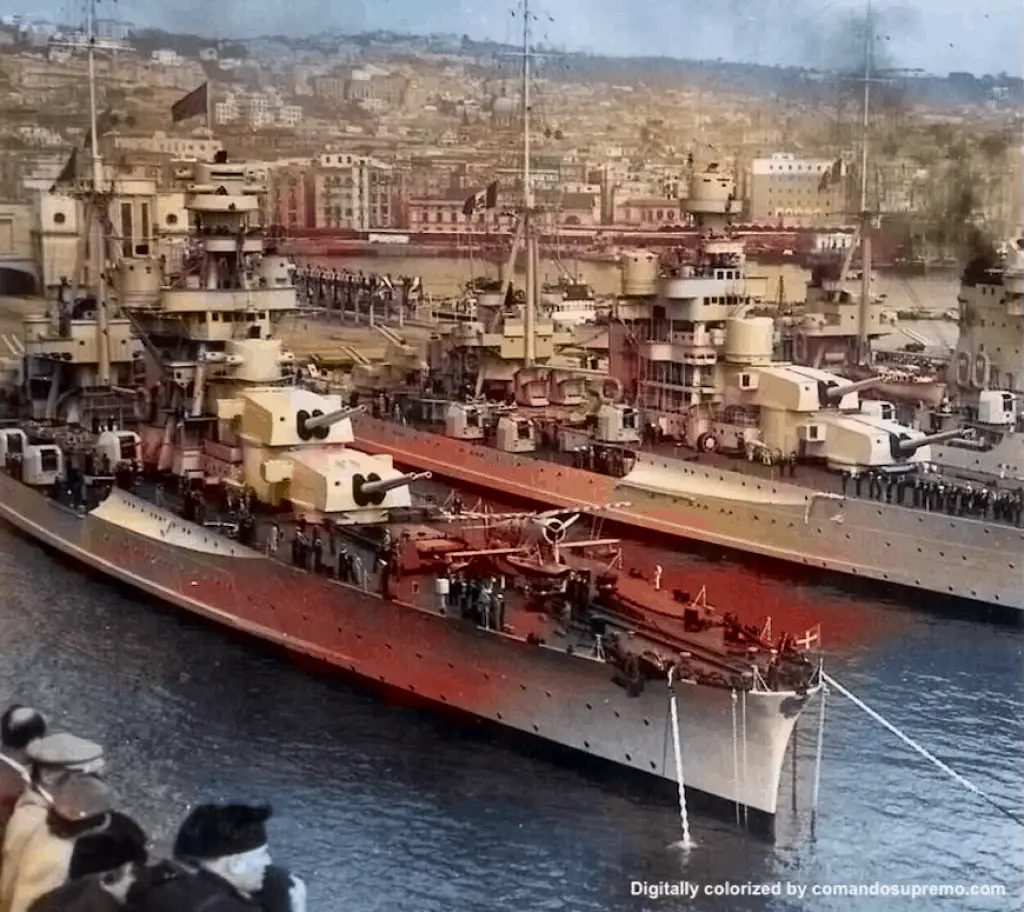
Cruisers Fiume, Pola and Zara in the port of Naples. Image digitally colorized.
Zara was the first laid down on the 4th of July, 1929, and ready for service on 20 October 1931. By January of 1933, all four Zaras were in service. The design of the Zara Class was nominally intended to respect the 10,000-ton limitation of the Washington Naval Treaty. However, it exceeded this by at least 1,300 tons. On a full load, the Zara Class cruisers had a displacement of up to 14,330 tons.
| Ship | Builder | Laid Down | Launched | Completed |
|---|---|---|---|---|
| Zara | Odero Terni Orlando | 4 July 1929 | 27 April 1930 | 20 October 1931 |
| Fiume | Stabilimento Tecnico Triestino | 29 April 1929 | 27 April 1930 | 23 November 1931 |
| Gorizia | Odero Terni Orlando | 17 March 1930 | 28 December 1931 | 23 December 1932 |
| Pola | Odero Terni Orlando | 17 March 1931 | 5 December 1932 | 21 December 1932 |
A Balanced Design
A crew of 841 men would operate the Zara Class cruisers. As mentioned, their displacement was 14,330 tons, owing largely to their heavy armor. Their design was heavily influenced by doubt in regards to prior, speed-oriented shipbuilding doctrine. The Trento Class which preceded them boasted good armament and incredible speed, but severely inadequate armor. The Zara class traded some speed for a heavily armored, but reasonably balanced design.
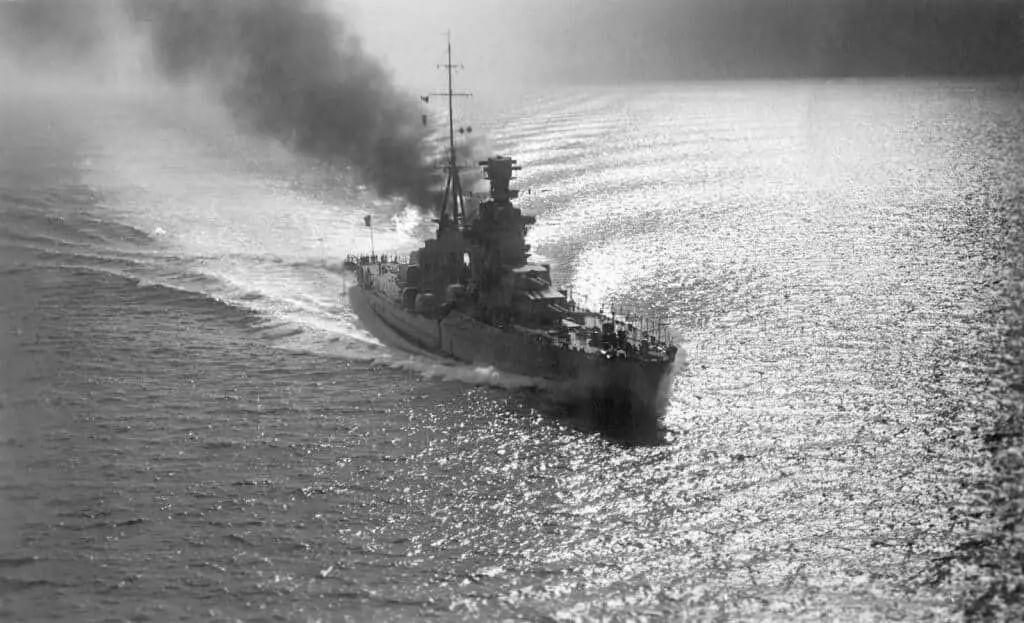
Zara class cruiser Fiume.
Despite the added weight, their 95,000shp engine provided the Zaras with an impressive speed of 32 knots. This was only two knots below the Trento Class, and slightly greater than their nearest peer, the British County Class. Their cruising range peaked at 5,400 nautical miles, under the best circumstances. However, this was a minor issue in the confined waters of the Mediterranean. The one, critical shortcoming of the Zara design was the lack of radar for detection and fire control.

The main guns of a Zara class cruiser.
Armor Protection
Their armor belt was 150 mm thick, which was quite heavy for a cruiser and would resist anything but battleship fire. In comparison to the 114 mm of the County Class, it was over 30% stronger. This armor spanned most of the vessel, the turrets, barbettes, and conning tower guarded by equally thick armor. The deck armor was only 70 mm thick, but this was several times the British County Class.
Additionally, their primary armament was quite impressive, consisting of eight 8″ guns in four gun turrets. The standard heavy cruiser armament of the day consisted of 8″ (203 mm) guns, but the Zaras were especially potent. During the Battle of Calabria, it would be found that they outranged the Revenge Class of British battleships. They owed this advantage to the high caliber length of the cannons, which afforded greater range, muzzle velocity, and penetration.

Regia Marina cruiser Fiume. Image digitally colorized.
The heavy secondary armament of the Zara Class heavy cruisers consisted of sixteen 100 mm guns, in double mounts. These were dual-purpose weapons, capable of engaging ships or aircraft. For antiair defense, Zara, Pola, and Fiume initially possessed four 40 mm guns. This was found lacking, and they ultimately saw this upgraded to eight 37 mm guns, arrayed in double mounts. Gorizia possessed a unique layout consisting of fourteen 20 mm guns, dispersed in six double mounts and two single mounts.
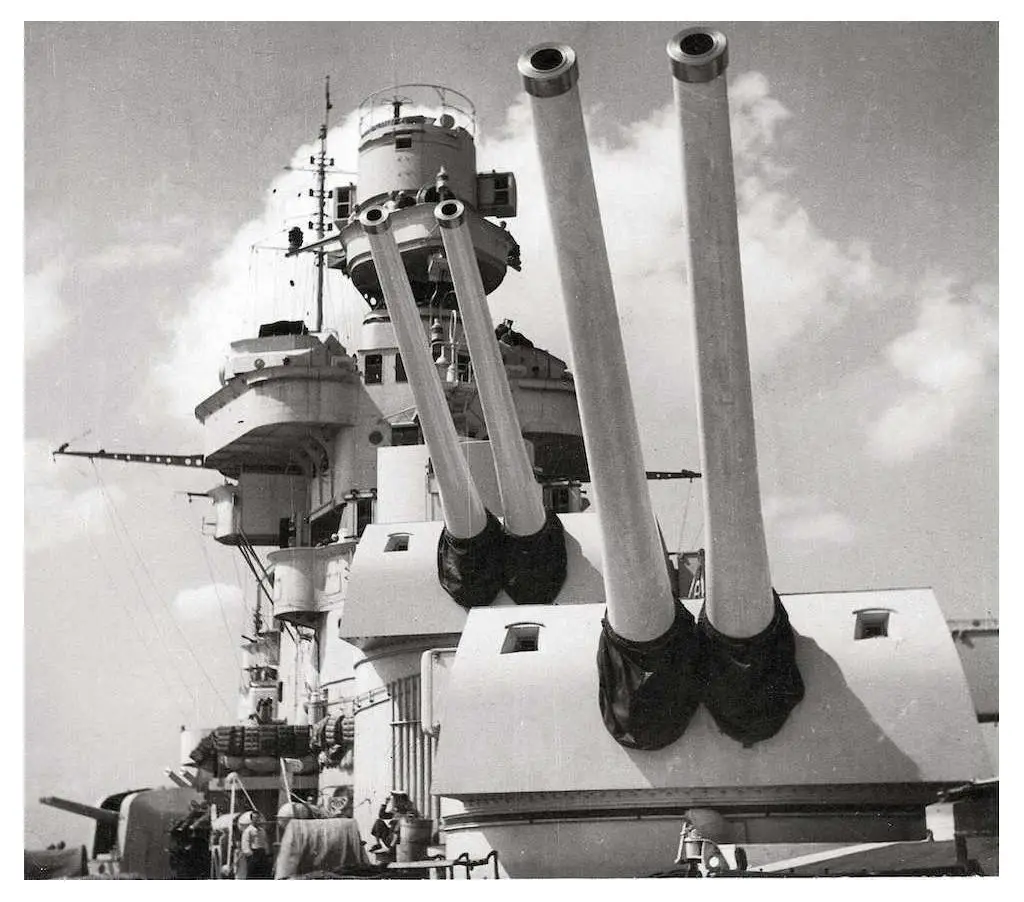
Forward turrets of the cruiser Pola.
Service History
Prior to the outbreak of the Second World War, the Zara Class cruisers would see some involvement in the Spanish Civil War. They would evacuate Italian civilians from Spain during the war, and return volunteers upon the end of the war.
Given their sleek outline, visually attractive design, and formidable weaponry, fleet reviews often displayed the Zaras to foreign leaders. In April of 1939, a supporting barrage from their guns helped to pave the way for the Italian invasion of Albania. Italy would join the war in the next year, and the Zaras would play an active role in convoy battles that defined that theater. They fought their largest engagement at Punta Stilo, in July 1940.
Battle of Calabria (Punta Stilo)
In the Battle of Calabria on 9 July 1940, both sides were escorting convoys to North Africa, with their key objective being convoy defense. The British possessed three battleships and an aircraft carrier, while the Regia Maria had two refurbished battleships. However, the Zara Class cruisers granted the Regia Marina superiority in lighter ships. They would open the battle with an attack on their British counterparts, as they dodged torpedoes launched by the planes of HMS Eagle.
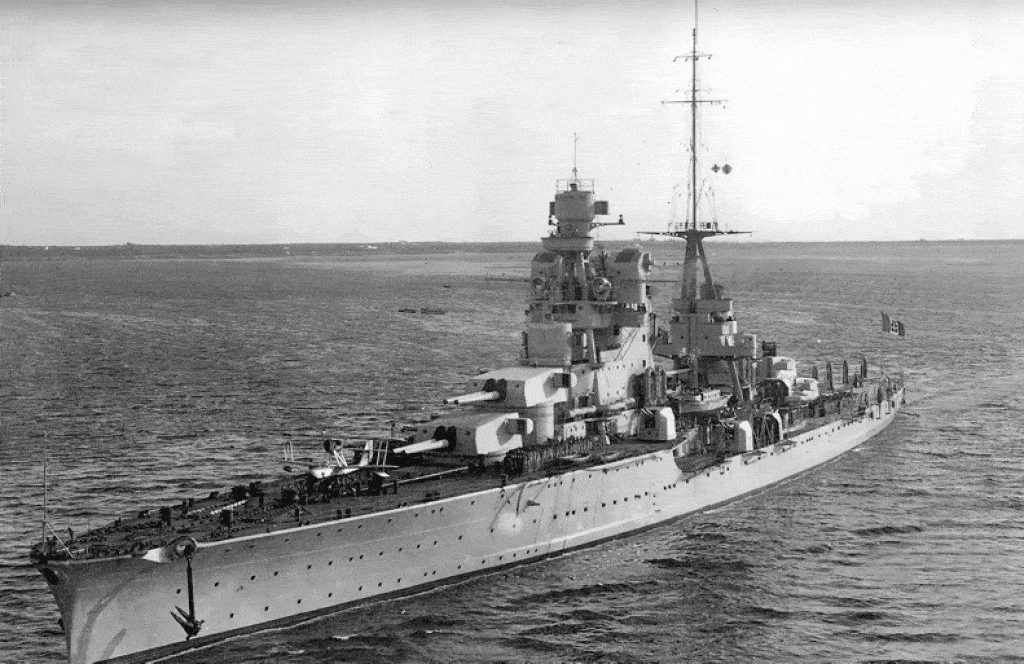
Regia Marina cruiser Pola.
When the opposing cruiser forces engaged from a long-range, the sides were roughly equal. Once the range closed, however, the British cruisers began to suffer damage. The approach of the British battleship HMS Warspite forced them back. However, the Zara, Pola, and other cruisers would attempt an attack on it later in the battle. Ultimately, both sides succeeded in their goals and the battle broke off as a stalemate.
The End of the Zara Class
In March 1941, German demands urged by faulty intelligence saw most of the Zara class cruisers dispatched to the Eastern Mediterranean. British intelligence anticipated the maneuver, and a powerful fleet was waiting. British torpedoes crippled Pola during the daytime Battle of Cape Matapan, leading to Zara and Fiume being made to protect her overnight. Due to their lack of radar, however, they failed to detect approaching British battleships. To make matters worse, Italian doctrine failed to consider night fighting. The Zaras found themselves ill-equipped and unprepared for the situation, with grave results. Three battleships closed to short-range and ambushed the cruisers, annihilating them with great loss of life.
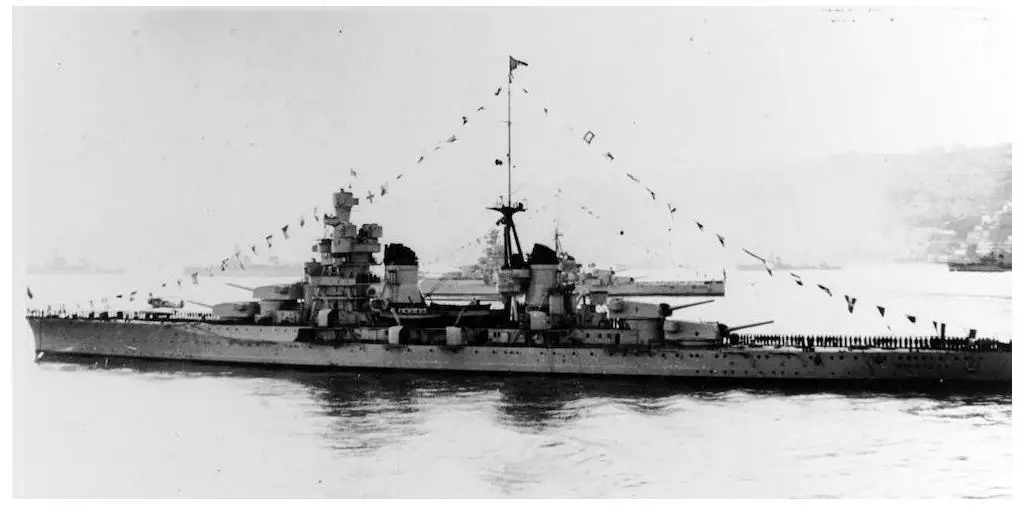
Gorizia of the Zara class in a fleet review in 1938.
The sole survivor of the massacre was Gorizia, who would see further action in the convoy battles of First and Second Sirte. On the April 1943 bombing of La Maddalena, Gorizia suffered three hits. While not sunk, the bombing removed Gorizia from action for the duration of the war. Repairing her after the war was a possibility, but an expensive one; the final Zara class cruiser was scrapped in 1947.
Specifications
| Class | Zara |
|---|---|
| Type | Heavy Cruiser |
| Built | 1931-1932 |
| Displacement | 14,330 tons |
| Length | 599 ft 9 in (182.8 m) |
| Beam | 67 ft 8 in (20.62 m) |
| Propulsion | 95,000 shp (71,000 kW) 8 Thornycroft boilers |
| Speed | 32 knots |
| Range | 5,400 nm |
| Crew | 841 |
| Armament | (4) Twin 203 mm (8") guns (8) Twin 100 mm (4") / 47 caliber guns (8) 37 mm (1") AA Guns 16 Twin 20 mm Breda 2 seaplanes |
| Armor | Deck: 70 mm (2.8 in) Belt: 150 mm (5.9 in) Turret faces: 150 mm Barbettes: 150 mm Conning tower: 150 mm |